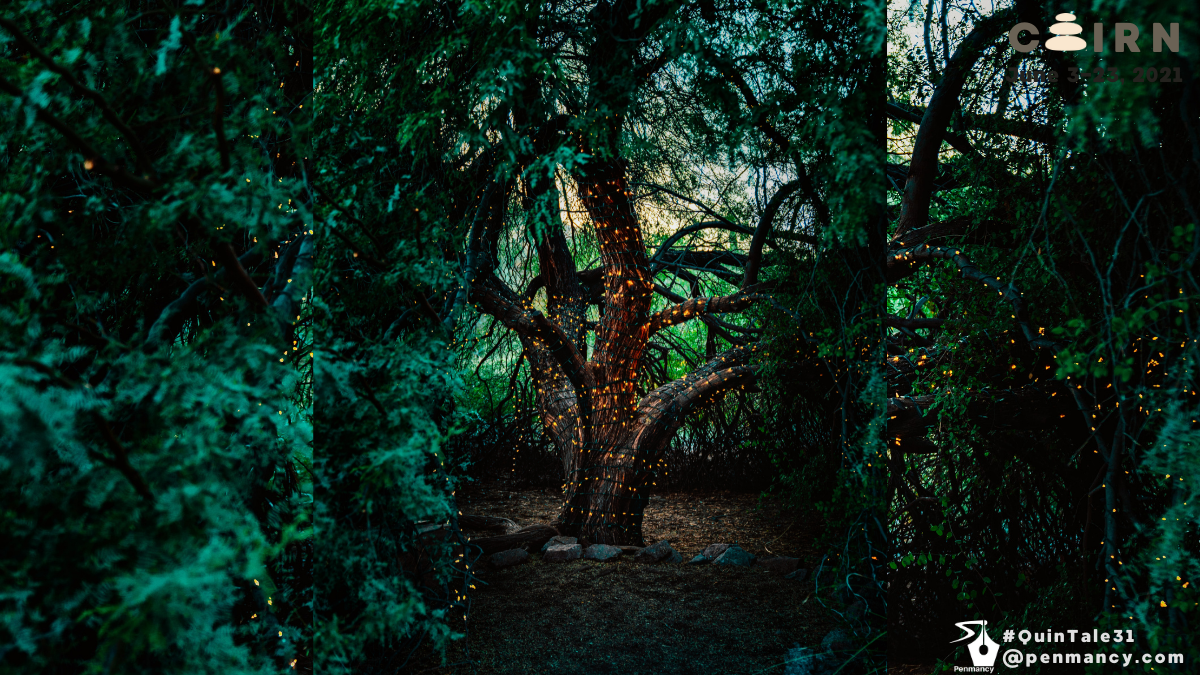It Happened a Midsummer Night

Like a malefic eye, the full moon peeked through the tangled tresses of coal-black clouds. The wind wailed, tossing the leaves—a banshee tearing her hair in agony.
Holidaymakers that had oohed and aahed over the thatched cottages, turf fires, and moss-carpeted walls were tucked in their cabins after a tiring day.
“A disrupted stone array is a sign of Fairy Rade,” a guide had pointed to the rock piles marking the fairy path. Some nodded; a few smiled. But none believed.
Now in the dead of night, I watched the unearthly procession. Eerie sounds of clinking bells, the clatter of hooves, and an unruly rabble of creatures armed with sticks and thorns filled the air. Their amber eyes seethed as they kicked the stacked rocks. The dust from their buckled shoes morphed into mist, tinting the vista, hushing the background noises.
The cavalcade pounded through the yew, strutting between the delicate stems of pink foxgloves into the dimly lit room at the west edge of the cottage, occupied by a family of three.
The ethereal chants teamed with seraphic music quivered in the still surroundings.
Come away, O human child!
To the waters and the wild,
With a faery, hand in hand.
The child, who had raced amidst the dandelions in the afternoon, spotting fairy doors and toadstools, rose into the air. A few cheeky, spry elves hovered around his mother. Sparks flew off the kid’s bare feet as he sailed past the threshold of the hut to the gnarled cairn at the far end of the farm—the portal to the underworld. The fluidic form of the Tuath Dé queen riding a pearl-white steed followed, her scarlet hair threshing like flames flapping against the gale.
Ambrosial melodies gamboled through the cornfield as the winged imps, silver-bearded gnome, green-eyed pixies; berg-trolls pranced around the boy. The colorful ribbons dangling from the hawthorn tree rippled against the twinkling will-o-wisps as the stones flanking the cairn rolled inside to come alive and join the revelry.
***
“What the hell,” the mother yelled, scratching the welts on her cheeks. Souvenirs from the wee folks—a pyramid of dead bats, spiders, and gnats sat beside her.
This is just the beginning, woman. I chuckled. Blistering hives, catatonic attack, near-fatal accidents—the aftermath of fairy wrath was endless.
“These eejits tourists! Why mooch this from the fecking cairn?” The Irish landlord hissed as he spotted me.
He scuttled past the spilled milk, stomped wildflower seeds, and sparkly trinkets—the fairy offerings he had lined the previous night, to the megalithic cairn in the field and propped me into place.
As the said family bolted out, the son spun around and winked at me. I sniggered. It was a changeling — an elderly, shape-shifting Nix pretending to be their son.
Yeah, I am the rock the family stole from the faerie abode. The heap of misfortune that alighted on them—well, in some parts, it’s called the curse of the cairns.
Glossary-
Come away, O human child- “The Stolen Child” is a poem by William Butler Yeats, published in 1889 in The Wanderings of Oisin.
In Irish Mythology, the Tuatha Dé are Irish fairies believed to be living in the cairns and ancient standing stones that may serve as a door to their world. Fairy Rade and Fairy path are an integral part of Irish folklore.
Curse of the cairns- It is a local legend where the curse is bestowed on anyone who takes stones from the cairns. Read more on https://spookyscotland.net/curse-clava-cairns/
Penmancy gets a small share of every purchase you make through these links, and every little helps us continue bringing you the reads you love!
